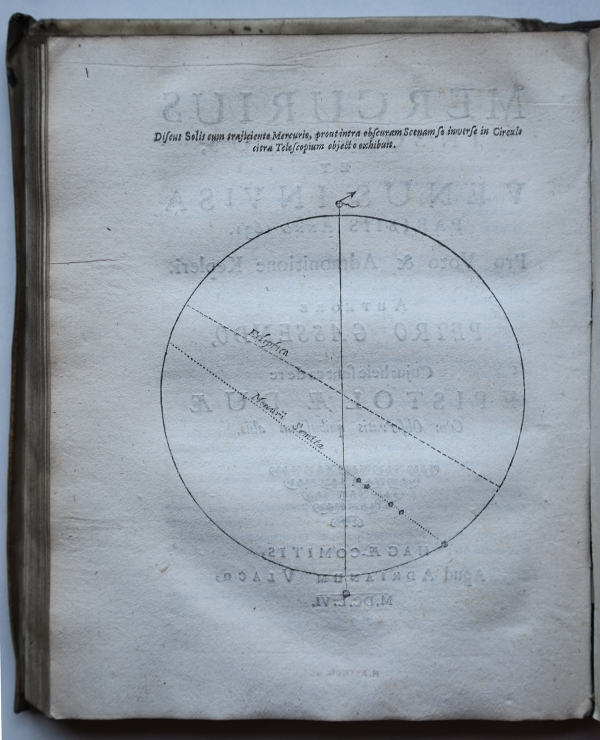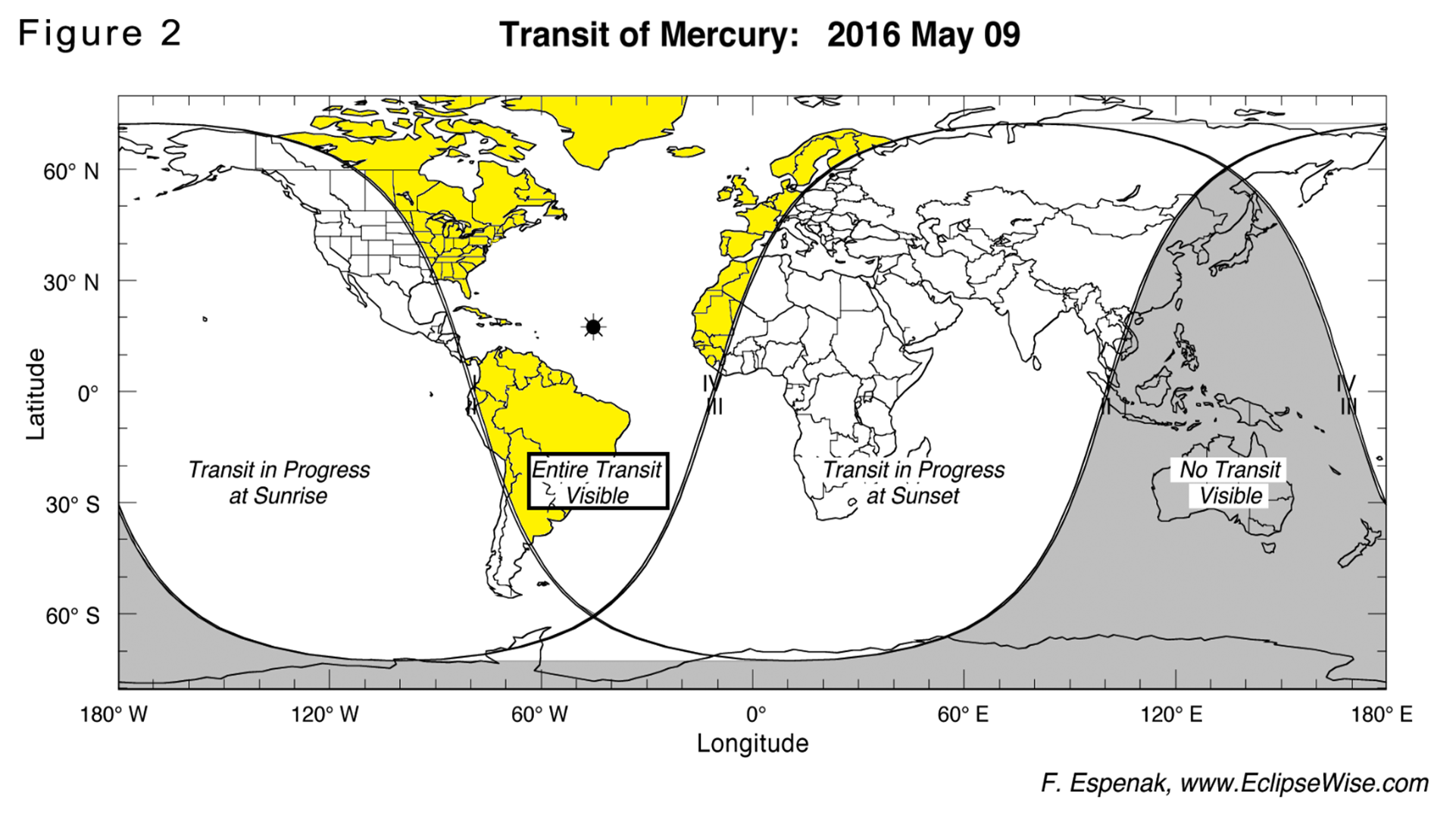Warning: Looking directly at the Sun, either during the transit or at any other time, can cause permanent damage to the retina, leading to loss of vision or blindness.
Transit observations through the ages
On the day of the transit the Royal Astronomical Society Library will be displaying historical accounts of transits of Mercury, such as the first observation made by Pierre Gassendi in 1631, and William Herschel's observations of the transit in 1786 and 1802. Also on display will be the earliest detailed drawings of the planet's surface made by Johann Schröter.

Pierre Gassendi (1592-1655)
MERCURIUS IN SOLE VISUS […], 1656
Pierre Gassendi was a French philosopher, priest, scientist, astronomer and mathematician, whose work was influential in its advocacy of the pursuit of an entirely empirical view of the world, within the constraints of our sensory perception and tradition. In 1631 he was the first to observe the transit of a planet across the Sun when he viewed a transit of Mercury that had been predicted by Johannes Kepler, as shown by his depiction here of the path of Mercury across the face of the Sun.

A transit of Mercury takes place when Mercury passes directly between the Earth and the Sun. During the transit Mercury appears as a very small black dot travelling across the Sun. This cannot be seen with the unaided eye. For information on how to view the transit check out our page on safely viewing the transit.
On the 11th November 2019 there will be a rare transit of Mercury, when the smallest planet in our Solar System will pass directly between the Earth and the Sun. The last time this happened was in 2016, and the next occasion will not be until 2032! During the transit, which takes place in the afternoon and early evening in the UK, Mercury will appear as a dark silhouetted disk against the bright surface of the Sun.
From the UK the transit begins at 1235 GMT, when the limb of Mercury appears to first touch the limb of the Sun, and ends at 1622 GMT when the limb of the silhouetted planet appears to leave the Sun. Observers in different locations will see the transit taking place at a slightly different time, as the planet will appear to take a slightly different path across the Sun.
On 9 May 2016 a transit of Mercury will take place, when the planet passes directly between the Earth and the Sun. Transits are rare - this is the first event of its kind since 2006, and the first seen in the UK since 2003 – and after this the next ones are in 2019 and then 2032.
Most of western Europe, north west Africa and the eastern half of the Americas will be able to see the full transit, and these areas are highlighted in yellow in the map below. Most of Asia and Africa will be able to see the transit at sunset, whereas the western part of North America and the southern part of South America will be able to see it at sunrise. East Asia and Australia will not be able to see any part of this transit.
Transit times vary by about 2 minutes, depending on where you are in the world. In the UK it starts at 1112 GMT (1212 BST), when the limb of Mercury appears to touch the limb of the Sun, and ends at 1842 GMT (1942 BST).
 A map of the global visibility of the transit of Mercury of 9 May 2016. Most of Western Europe, including the UK, is well placed to observe the event this time.
A map of the global visibility of the transit of Mercury of 9 May 2016. Most of Western Europe, including the UK, is well placed to observe the event this time.
Watch the transit of Mercury with the Royal Astronomical Society: 9 May 2016
On 9 May 2016 a transit of Mercury will take place, when the planet passes directly between the Earth and the Sun. Transits are rare - this is the first event of its kind since 2006, and the first seen in the UK since 2003 – and after this the next ones are in 2019 and then 2032.
If the weather is clear, then the UK should enjoy a good view of the transit on 9 May. The whole event runs from 1212 BST to 1942 BST, when Mercury will appear as a slowly moving silhouetted disk against the bright solar surface.
Because the planet is so small, it only blocks out a tiny part of the light of the Sun. This means it is impossible to see Mercury, and dangerous to try to observe it with the unaided eye, or using a telescope or binoculars without approved specially designed filters.
Page 1 of 2
